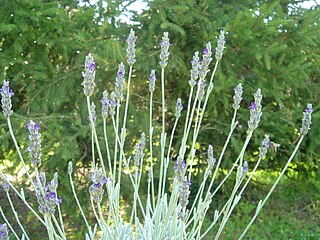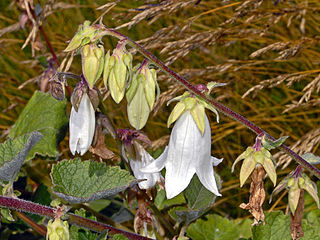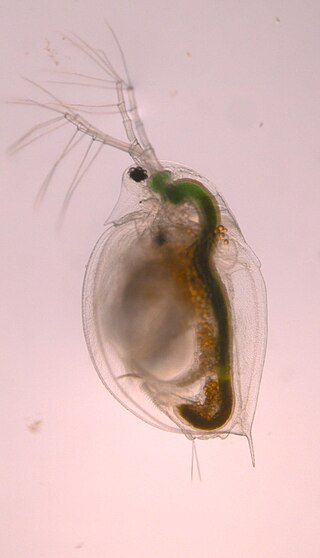
Pulicaria aromatica is a species of flowering plant in the family Asteraceae. It is found only on the island of Socotra in Yemen. Its natural habitats are subtropical or tropical dry forests and rocky areas.

Pulicaria is a genus of flowering plant in the sunflower family, native to Europe, Asia, and Africa. In North America Pulicaria is known by the common name false fleabane.
Pulicaria dioscorides is a species of flowering plant in the family Asteraceae. It is found only on the island of Socotra in Yemen. Its natural habitat is rocky areas.
Pulicaria diversifolia is a species of flowering plant in the family Asteraceae.It is found only on the islands of Socotra and Samhah in Yemen. Its natural habitat is rocky areas.
Pulicaria elegans is a species of flowering plant in the family Asteraceae. It is found only on the island of Socotra in Yemen. Its natural habitats are subtropical or tropical dry forests and subtropical or tropical dry shrubland.

Pulicaria stephanocarpa is a species of flowering plant in the family Asteraceae. It is endemic to Yemen's Socotra archipelago, where it is native to the islands of Socotra, Samhah, and Abd al Kuri. Its natural habitats are subtropical or tropical dry shrubland and rocky areas.

Pulicaria vieraeoides is a species of flowering plant in the family Asteraceae. It is endemic to the island of Socotra in Yemen. Its natural habitat is subtropical or tropical dry shrubland.
Actinodaphne lanata is a species of plant in the family Lauraceae. It is endemic to the Nilgiris of Tamil Nadu, India.
Bomarea lanata is a species of plant in the Alstroemeriaceae family. It is endemic to Ecuador. Its natural habitat is subtropical or tropical moist montane forests. It is threatened by habitat loss.
Buddleja lanata is a species endemic to Ecuador where it grows on dry, windy plateaux amid grasses and bracken at elevations of 1,150 – 2,700 m. The species, first named and described by Bentham in 1845 is now threatened by habitat loss.
Calceolaria lanata is a species of plant in the Calceolariaceae family. It is endemic to Ecuador.
Horsfieldia rufo-lanata is a species of plant in the family Myristicaceae. It is endemic to Sarawak and Sabah in Borneo, Malaysia. It is a vulnerable species threatened by habitat loss.

Salix lanata, the woolly willow, is a subarctic species of willow native to Iceland, the Faeroe Islands and Finland, through to eastern Siberia. In Scotland it can be found in only a few localities of Perthshire, Angus and Aberdeenshire, generally on rocky mountain sides at altitudes of 600–900 m (1,969–2,953 ft).

Pulicaria dysenterica, the common fleabane, or, in North America, meadow false fleabane, is a species of fleabane in the family Asteraceae. It is native to Europe and western Asia where it grows in a variety of habitats ranging from semi-arid Mediterranean woodlands to wetter situations. Pulicaria dysenterica is perennial and can form dense clusters of plants, spreading by its roots. It flowers at its maximum height of about 60 centimetres (2.0 ft). Leaves are alternately arranged and clasp the stem, which itself contains a salty-astringent liquid. The yellow inflorescences are typically composed of a prominent centre of 40–100 disc florets surrounded by 20–30 narrow, pistillate ray florets. When setting seed the flower heads reflex.

Quercus lanata, the woolly-leaved oak, is a species of Quercus native to southern and southeastern Asia, including India, Bhutan, Nepal, Indochina, and southwestern China. It is a large evergreen tree up to 30 metres tall. The leaves are thick and leathery, green on top but covered in thick wool on the underside. It is classified in subgenus Cerris, section Ilex.

Cissus subaphylla is a low shrub in the grape family Vitaceae. It is endemic to the Yemeni island of Socotra. The plant grows mainly in dry, low-lying areas on alluvial fans or on limestone slopes, and is rarely found above elevations of 300 metres (980 ft), where it is replaced by C. hamaderohensis. It does not have the climbing habit of other Cissus species, and its stems are flattened and gray-green in colour, with relatively small leaves and flowers. The tangled mats of C. subaphylla stems act as a protective covering for plants regularly eaten by goats and other browsing animals; the plant is thus important in the rehabilitation of species such as Dendrosicyos, Maerua and Commiphora.

Lavandula lanata, the woolly lavender, is a species of flowering plant in the family Lamiaceae, native to southern Spain. An evergreen dwarf shrub growing to 1 m (3.3 ft) tall and broad, it is noted for the pronounced silver woolly hairs on its leaves, whence the Latin specific epithet lanata. The deep violet purple flowers are borne on narrow spikes, and give off the familiar lavender scent.

Campanula lanata, the woolly bellflower, is a biennial herb belonging to the family Campanulaceae.

Daphnia pulicaria is a species of freshwater crustaceans found within the genus of Daphnia, which are often called "water fleas," and they are commonly used as model organisms for scientific research. Like other species of Daphnia, they reproduce via cyclic parthenogenesis. D. pulicaria are filter-feeders with a diet primarily consisting of algae, including Ankistrodesmus falcatus, and they can be found in deep lakes located in temperate climates. Furthermore, D. pulicaria are ecologically important herbivorous zooplankton, which help control algal populations and are a source of food for some fish. D. pulicaria are closely related to Daphnia pulex, and numerous studies have investigated the nature and strength of this relationship because these species can produce Daphnia pulex-pulicaria hybrids. In recent years, D. pulicaria along with other Daphnia species have been negatively affected by invasive predators, such as Bythotrephes longimanus.

Rebutia neocumingii, the Cuming crown cactus, is a species of cactus in the genus Rebutia, endemic to Bolivia. It has gained the Royal Horticultural Society's Award of Garden Merit.












